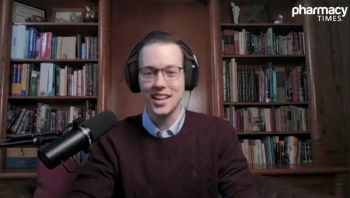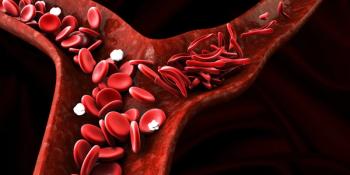
- March 2018 HPV Vaccination Supplement
- Volume 84
- Issue 3
Making HPV Vaccination Affordable for Patients
Human papillomavirus infection (HPV) is a known cause for virtually all cases of cervical and anal cancers and about 70% of oropharyngeal cancer cases.
Human papillomavirus (HPV) is a known cause for virtually all cases of cervical and anal cancer and about 70% of oropharyngeal cancer cases.1 Vaccination represents an effective way to prevent these types of cancer. The 9-valent HPV recombinant vaccine (Gardasil 9, Merck & Company) protects against 9 different types of HPV, most of which have the potential to cause cancer. It is recommended for children, adolescents, and young adults 9 to 26 years of age.1 Vaccination rates within this age group have steadily improved over the last decade as education about the vaccine has become more prevalent. However, certain barriers prevent parents from vaccinating their children for HPV, one of which can be cost. Therefore, it is essential that patients and their parents are educated about strategies and programs to reduce the cost burden and increase vaccination rates.
Change in Dosing Schedule
The 9-valent HPV vaccine is one of the most expensive vaccines on the lists of recommended vaccines for children and for adults from the Advisory Committee on Immunization Practices (ACIP).2,3 At a cost of over $200 per dose, the price can be a real deterrent for parents. Some parents may have the perception that HPV is a 3-dose series, which is true in some cases. However, as of October 2016, the ACIP changed its recommendation to a 2-dose schedule, provided that the first dose is initiated before the patient’s fifteenth birthday.1 This fact alone can save parents one-third of their expected cost, and it may also discourage delaying vaccination for their children. The 2-dose schedule is more convenient and can be less costly for the patient.
Insurance Coverage
Insurance coverage rates for vaccines have improved over the past decade, especially through pharmacies. Many Pharmacy Benefit Managers have included vaccines, including HPV, in their patients’ pharmacy benefit. Patients should be encouraged to visit the pharmacy first to check the price and to see if the 9-valent HPV vaccine is covered under their pharmacy plan. If the price is not acceptable for patients, pharmacists can encourage them to make a call to their medical insurance to see if the vaccine would be covered at a better rate at their provider’s office.
The Affordable Care Act
The passing of the Affordable Care Act (ACA) in 2010 provided the opportunity for many individuals living in the United States to obtain health insurance who did not have access previously. One of the notable provisions in the ACA is mandatory coverage of vaccines. All marketplace health plans and many other plans are required to cover HPV vaccines for children (in accordance with ACIP recommendations) without charging a copayment or coinsurance, even if the patient’s yearly deductible has not been met.4 According to a study published by the North American Society for Pediatric and Adolescent Gynecology in 2017, female respondents to a survey were 3.3 times more likely to receive the HPV vaccine after the implementation of ACA than previously.5 Obviously, other factors were involved in this increase, but these results definitely indicate a move in the right direction.
Uninsured Patients
Patients without insurance often have the most difficult time keeping their vaccinations up to date. With the expensive price tag on the 9-valent HPV vaccine, some parents may decide to forego it. However, there are options for some children to receive the vaccine for free, or at a reduced price, and pharmacists can be influential in directing patients toward these programs. It may mean that the patient goes elsewhere for service, but ensuring that they get protected in an affordable way is most important.
Vaccines for Children Program
Vaccines for Children (VFC) is a federally funded program that provides vaccines at no cost to children who might not otherwise be vaccinated because of inability to pay.6 Vaccines for Children makes all vaccines recommended by the ACIP, including HPV, available to children who qualify. The vaccines are purchased by the Centers for Disease Control and Prevention (CDC) and distributed to grantees, who then provide them at no charge to clinics, physicians, or pharmacies that are registered VFC providers. Children younger than 19 years of age who are Medicaid eligible, uninsured, underinsured, or are American Indian or Alaska Native, are eligible for VFC. Underinsured is defined as someone who has insurance that doesn’t cover vaccines, or only covers certain agents.6
Some VFC providers may ask for an administration fee. This fee must be waived if the family cannot afford to pay it.6 Pharmacists who are interested may be able to establish their store up as a VFC provider location. Providers can be located by contacting the state’s VFC Coordinator. Pharmacy staff should be ready to assist qualified patients in locating a provider.
Merck Patient Assistance
For older patients who do not qualify for the VFC program, such as those 19 to 26 years of age, Merck & Company offers the Merck Helps program that provides the 9-valent HPV vaccine free of charge to eligible individuals who cannot afford it on their own.7 Patients must be 19 to 26 years of age and live in the United States to be eligible. They must also be uninsured and fall below a minimum income level, either for themselves or their household. To apply, patients must fill out an application form and fax it to Merck & Company, which often provides an answer via a phone call to the provider in as little as 10 minutes. This allows patients who qualify to receive their first dose while they are still at the provider location.7 Providers must be licensed with Merck & Company to participate in this program.
Conclusion
Many patients will be able to receive the 9-valent HPV vaccine at an affordable cost, or at no cost, through their insurance plan. For patients who are uninsured, or who cannot afford a copay, pharmacists should be prepared to present other available options to assist with cost. If you are knowledgeable about the Vaccines for Children program or the Merck Helps program, you may be able to help someone receive an HPV vaccine for whom it would not otherwise be affordable. It may take an extra few minutes or a couple of phone calls, but possibly helping prevent someone from developing cancer is worth the time. Please take a moment to review these programs if you believe you have patients who could benefit from them.
Brady Cole, RPH, is pharmacy manager at Tom Thumb Pharmacy in Plano, Texas, and an active preceptor at Texas Tech University and the University of Houston. He is also founder of the website Helpful Pharmacist, helpfulpharmacist.com.
References
- The National Cancer Institute. Human papillomavirus (HPV) Vaccines. NCI website. www.cancer.gov/about-cancer/causes-prevention/risk/infectious-agents/hpv-vaccine-fact-sheet. Accessed February 15, 2018.
- The Centers for Disease Control and Prevention. Pediatric/VFC Price List. The CDC website. https://www.cdc.gov/vaccines/programs/vfc/awardees/vaccine-management/price-list/index.html#modalIdString_CDCTable_0. Accessed February 26, 2018.
- The Centers for Disease Control and Prevention. Adult Vaccine Price list. The CDC website. https://www.cdc.gov/vaccines/programs/vfc/awardees/vaccine-management/price-list/index.html#modalIdString_CDCTable_1. Accessed February 26, 2018.
- Preventive care benefits for children. Healthcare.gov website. https://www.healthcare.gov/preventive-care-children/. Accessed February 15, 2018.
- Corriero R, Gay JL, Robb SW, Stowe EW. Human papillomavirus vaccination uptake before and after the Affordable Care Act: Variation According to Insurance Status, Race, and Education (NHANES 2006-2014). J Pediatr Adolesc Gynecol. 2018 Feb;31(1):23-27. doi: 10.1016/j.jpag.2017.07.002. Epub 2017 Jul 26.
- The Centers for Disease Control and Prevention. Vaccine for Children Program (VFC). CDC website. https://www.cdc.gov/vaccines/programs/vfc/index.html. Updated April 24, 2014. Accessed February 15, 2018.
- Merck Helps. Merck Vaccines website. http://www.merckhelps.com/GARDASIL%209. Accessed February 15, 2018.
Articles in this issue
almost 8 years ago
The Path Ahead for the HPV Vaccinealmost 8 years ago
Year-Round Solutions Beyond the Influenza Seasonalmost 8 years ago
Dialogue and Education: Engaging Young Adults on the HPV Vaccinealmost 8 years ago
Patient Communication Strategies for Boosting HPV Vaccination Coveragealmost 8 years ago
HPV Vaccination in Young Adults: Are We Doing Enough?almost 8 years ago
The 9-Valent HPV Recombinant Vaccine: An IntroductionNewsletter
Stay informed on drug updates, treatment guidelines, and pharmacy practice trends—subscribe to Pharmacy Times for weekly clinical insights.

















































































































































































































